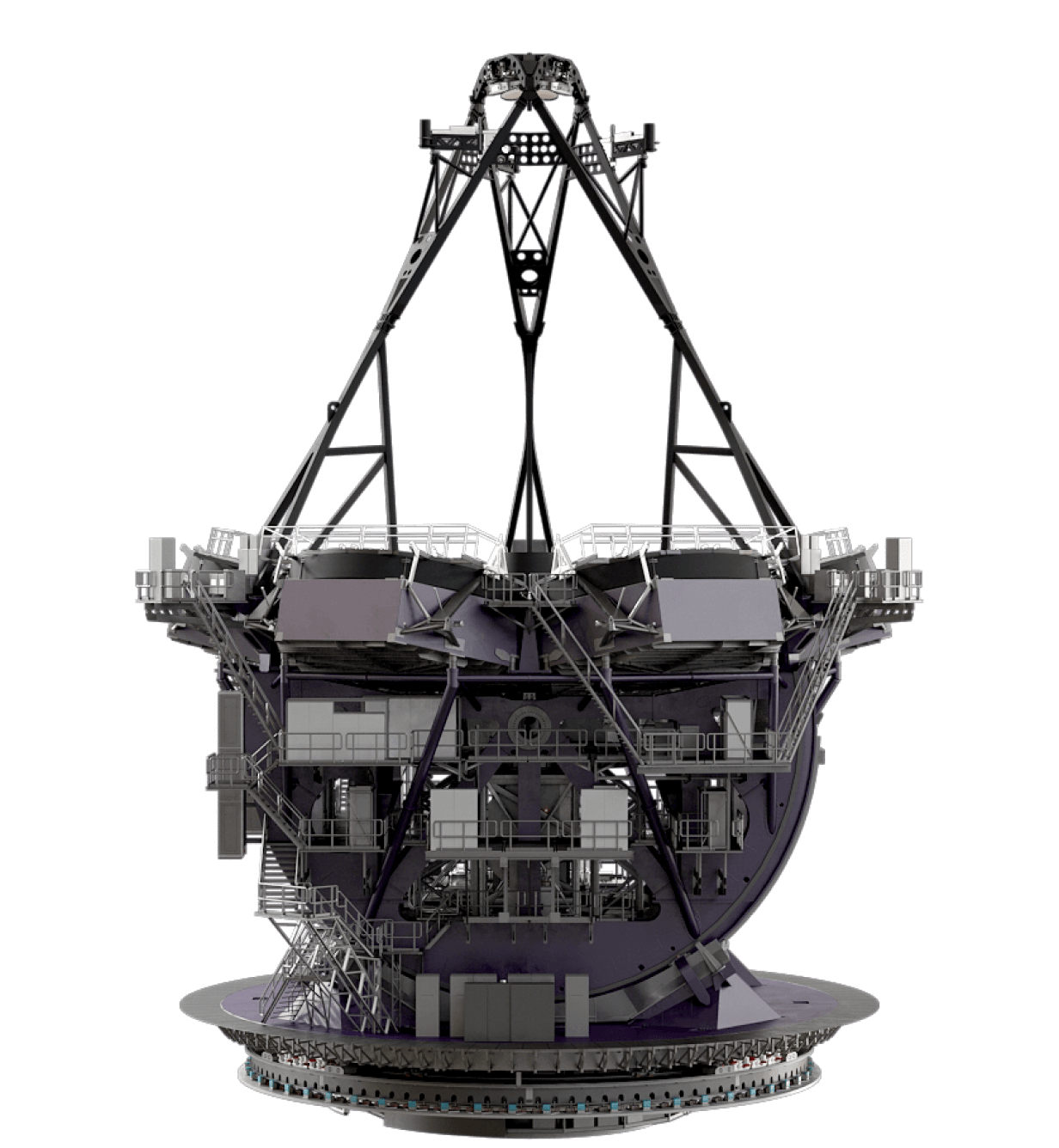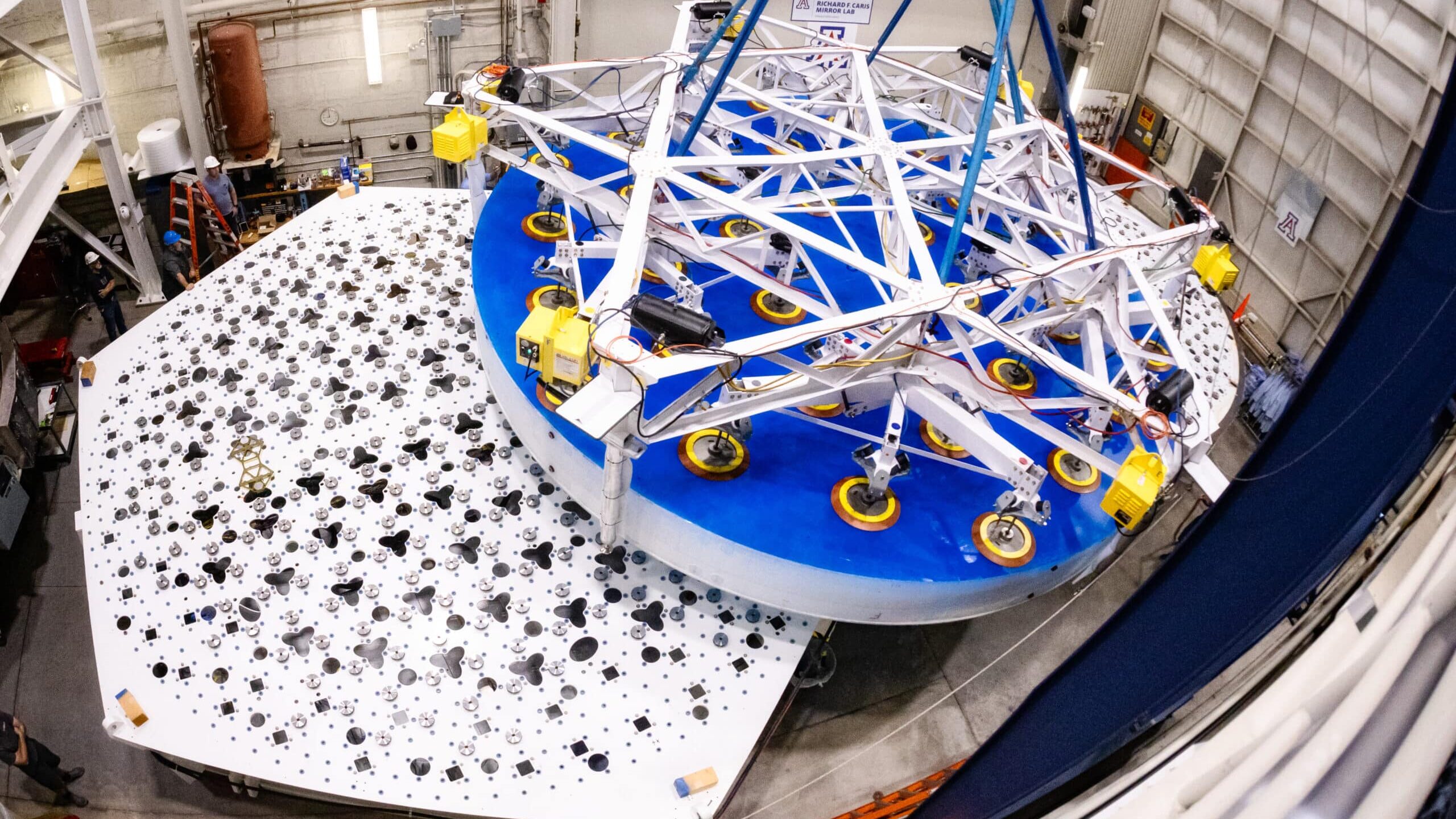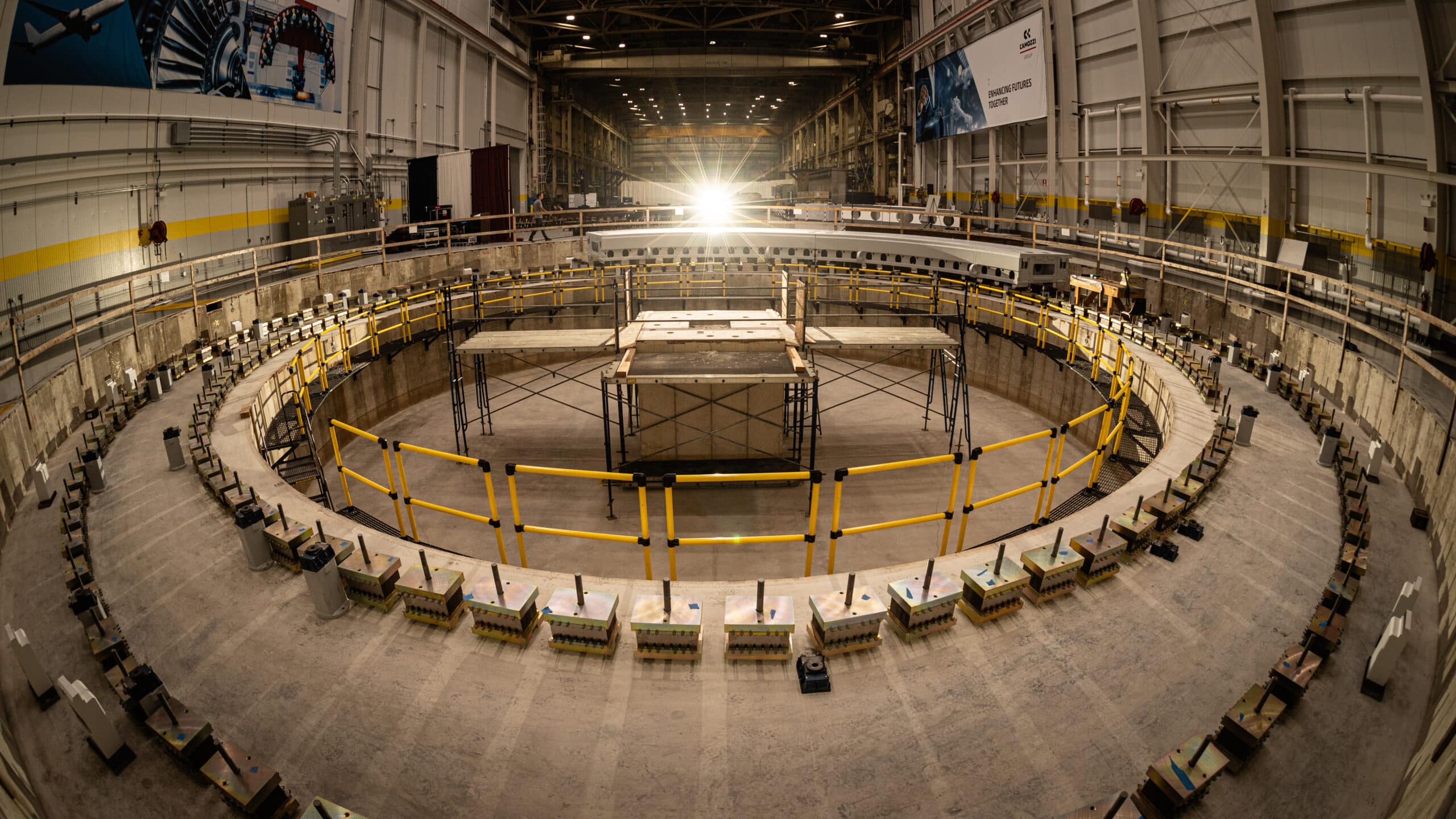
Telescope Mount
The Supporting Structure
At 12 stories tall and 2,100 metric tons, the Giant Magellan Telescope mount is an imposing yet agile structure. The altitude-azimuth mount provides the supporting framework for the world’s largest mirrors, adaptive optics, scientific instruments, and control systems. The steel superstructure sits on a concrete pier that’s 22 meters in diameter and is so stable that it can resist image quality interruptions from even the slightest vibration. While massive, this precision tool is designed to glide frictionlessly in three degrees of freedom so that the 16 metric ton primary mirrors have undisturbed access to study the night sky.
Scientific Jukebox
The telescope mount accommodates 10 powerful scientific instruments. This unprecedented flexibility allows astronomers to rapidly change observing modes, collect more scientific data, and capture more images of celestial objects in deep space than ever before.
Precision Alignment
The telescope mount can precisely position the giant mirrors as they track celestial targets moving across the sky with incredible ~1 arcsec accuracy. The azimuth track is designed to rotate a full 360 degrees on the x axis and from 25 degrees to 165 degrees on the y axis.
Hydrostatic Bearing
The 4.5 million pound telescope mount floats on a film of oil just 50 microns thick, or the thickness of a human hair, for frictionless movement.
Monocoque Superstructure
Similar to the hull of a boat, the seven “cells” that hold the telescope’s giant 16-ton primary mirrors do not have a traditional internal load-carrying frame. Instead, the strength comes from its unique shape and external shell. This allows the telescope mount to have a compact and lightweight design for its size. It also makes the telescope extremely stiff and stable so that it can resist image quality interruptions from wind and mechanical vibrations as the telescope moves to track celestial objects throughout the night.



